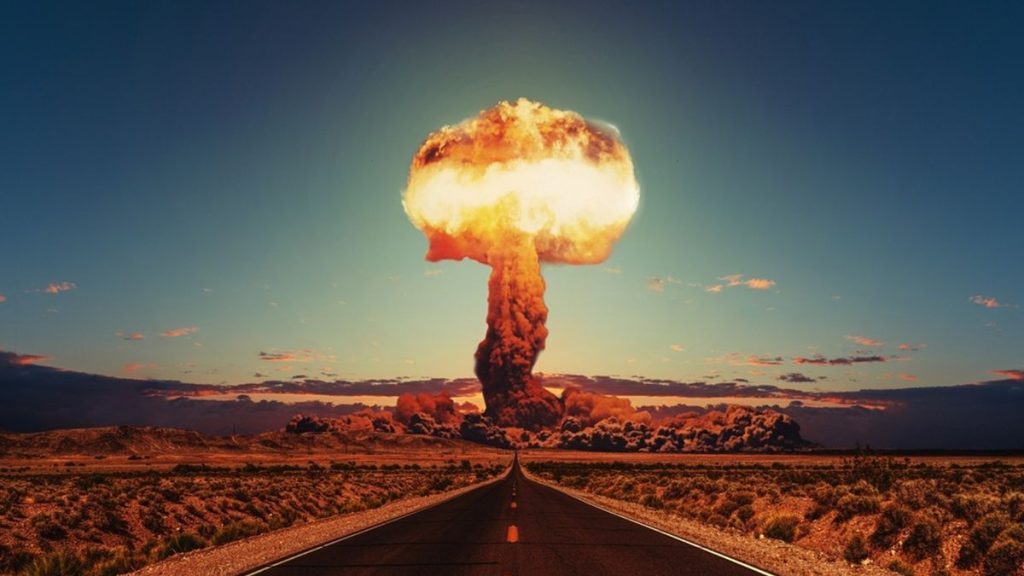The Creation of the Nuclear Bomb: Key Figures and Impact

The invention of the nuclear bomb, one of the most significant technological breakthroughs of the 20th century, changed the course of history and ushered in the Atomic Age. Born out of scientific curiosity and geopolitical necessity during World War II, the nuclear bomb remains a symbol of immense power and devastation. In this article, we will explore the history of the nuclear bomb’s development, the key figures involved, and the far-reaching consequences of its creation.
Table of Contents
The Early Development of Nuclear Physics
The development of nuclear bombs can be traced back to breakthroughs in nuclear physics at the beginning of the 20th century. These discoveries laid the foundation for the eventual creation of nuclear weapons.
The Discovery of the Atom and Nuclear Fission
At the heart of the nuclear bomb is the principle of nuclear fission, which is the process of splitting atomic nuclei to release enormous amounts of energy. This concept began with the discovery of the atom and subsequent research into nuclear physics.
- Discovery of the Atom: In 1897, physicist J.J. Thomson discovered the electron, revealing that atoms were composed of smaller subatomic particles. This discovery opened the door to further investigation into the structure of the atom.
- Rutherford’s Model: In 1911, Ernest Rutherford proposed that atoms had a small, dense nucleus made up of protons and neutrons, surrounded by electrons. This model helped scientists better understand atomic structure and interactions.
- Nuclear Fission: In 1938, German scientists Otto Hahn and Fritz Strassmann, along with Austrian physicist Lise Meitner, discovered nuclear fission. When uranium atoms were bombarded with neutrons, they split into lighter elements, releasing an immense amount of energy. This discovery was key to the eventual development of nuclear weapons.
Albert Einstein and the Letter to Roosevelt
Although Albert Einstein did not directly work on the Manhattan Project (the U.S. program that developed the atomic bomb), he played a pivotal role in its inception. In 1939, Leo Szilard, a Hungarian physicist, convinced Einstein to sign a letter to U.S. President Franklin D. Roosevelt, warning him of the possibility that Nazi Germany could develop nuclear weapons using uranium. This letter prompted Roosevelt to initiate the development of the atomic bomb, leading to the establishment of the Manhattan Project.
The Manhattan Project: Birth of the Nuclear Bomb
Origins of the Manhattan Project
The Manhattan Project officially began in 1942 under the leadership of General Leslie R. Groves of the U.S. Army Corps of Engineers. The project was named after the Manhattan Engineer District of the U.S. Army, where early research was conducted. Its goal was to develop an atomic bomb before Nazi Germany or Imperial Japan could succeed in building one.
The Manhattan Project brought together some of the brightest minds in physics, engineering, and chemistry from around the world. By the end of the project, over 130,000 people were employed, and its total cost was around $2 billion (equivalent to nearly $30 billion today).
Key Scientists Involved in the Manhattan Project
Several scientists played critical roles in the development of the atomic bomb:
- J. Robert Oppenheimer: Known as the “father of the atomic bomb,” Oppenheimer was the lead scientific director of the Manhattan Project. A theoretical physicist, Oppenheimer oversaw the development of the first atomic bomb at Los Alamos Laboratory in New Mexico. His leadership was essential in guiding the scientific team toward success.
- Enrico Fermi: An Italian-American physicist, Fermi was a pioneer in nuclear physics and played a key role in the project. He created the first controlled nuclear chain reaction at the University of Chicago in 1942, an essential milestone in understanding how to harness nuclear energy for a bomb.
- Leo Szilard: Szilard was a physicist who initially proposed the concept of a nuclear chain reaction in 1933. He, along with Einstein, advocated for the U.S. government to invest in nuclear research, and he worked closely with Fermi on developing the first nuclear reactor.
- Niels Bohr: A Danish physicist, Bohr was instrumental in explaining the mechanics of nuclear fission. His work on the theory of the atomic structure and quantum mechanics was foundational to the scientific understanding necessary for developing the bomb.
- Richard Feynman: A young physicist who later became one of the most celebrated scientists of the 20th century, Feynman worked on calculating the efficiency of the bomb’s design and testing its components.
Key Locations and Research Facilities
- Los Alamos Laboratory (New Mexico): Los Alamos was the primary site for the bomb’s design and development. Under Oppenheimer’s leadership, scientists and engineers conducted experiments and assembled the bomb’s components.
- Oak Ridge (Tennessee): Oak Ridge was the site for uranium enrichment, which was crucial to developing the fuel for the bomb. The uranium isotope U-235 was separated from U-238 using massive machines called calutrons.
- Hanford Site (Washington): Hanford produced plutonium, the other essential element for the bomb. Plutonium-239 was produced in nuclear reactors and shipped to Los Alamos for bomb assembly.
The First Nuclear Tests: The Trinity Test
On July 16, 1945, the first successful test of an atomic bomb, codenamed Trinity, took place in the desert of Alamogordo, New Mexico. The bomb, named “Gadget”, was a plutonium-based implosion device similar to the one later dropped on Nagasaki.
The Trinity test unleashed an explosion equivalent to 20 kilotons of TNT, creating a fireball visible for miles and leaving a glassy crater at the site. Observers, including Oppenheimer, were awed by the destructive power of the bomb. Upon witnessing the explosion, Oppenheimer famously recalled a line from Hindu scripture, the Bhagavad Gita: “Now I am become Death, the destroyer of worlds.”
The Bombings of Hiroshima and Nagasaki
Despite the successful Trinity test, the use of nuclear weapons in warfare was a controversial and world-altering decision. On August 6, 1945, the U.S. dropped the first nuclear bomb, “Little Boy,” on the city of Hiroshima, Japan. Little Boy was a uranium-based bomb with an explosive yield of about 15 kilotons. The explosion killed an estimated 140,000 people, either instantly or from radiation sickness in the following months.
Three days later, on August 9, 1945, the U.S. dropped a second bomb, “Fat Man,” on the city of Nagasaki, Japan. Fat Man was a plutonium-based bomb similar to the one tested at Trinity, with a yield of around 21 kilotons. Approximately 70,000 people died in Nagasaki as a result of the explosion and its aftermath.
These bombings effectively ended World War II, with Japan surrendering on August 15, 1945. However, the human cost and ethical implications of using nuclear weapons remain subjects of intense debate.
The Impact of the Nuclear Bomb and the Cold War
The creation of the nuclear bomb not only ended World War II but also marked the beginning of the Cold War, a period of geopolitical tension between the United States and the Soviet Union. The nuclear arms race became a central feature of this era, with both superpowers developing vast arsenals of nuclear weapons.
The Nuclear Arms Race
After the war, the Soviet Union rapidly developed its own atomic bomb, successfully testing it in 1949. This initiated an arms race that saw both the U.S. and the Soviet Union build ever-larger stockpiles of nuclear weapons, including the more powerful hydrogen bomb (developed in 1952 by the U.S.).
The fear of mutually assured destruction (MAD) dominated Cold War politics, with the threat of nuclear war always looming. It wasn’t until the Strategic Arms Limitation Talks (SALT) and later agreements that the superpowers began to limit their nuclear arsenals.
Ethical and Humanitarian Debates
The use of nuclear bombs in warfare sparked global debate about the ethics of deploying such weapons. While the bombings of Hiroshima and Nagasaki brought an end to World War II, they also resulted in horrific human suffering, with tens of thousands of people dying from radiation sickness, burns, and other injuries.
Today, the continued existence of nuclear weapons raises questions about the risks of nuclear proliferation, the potential for accidental launches, and the long-term impact on global peace and security.
Conclusion: The Legacy of the Nuclear Bomb
The invention of the nuclear bomb was a turning point in human history. Developed during the Manhattan Project by some of the world’s greatest scientific minds, the bomb demonstrated both the immense power of scientific innovation and its capacity for destruction.
The bombings of Hiroshima and Nagasaki had a profound impact on the course of history, ending World War II but also introducing the world to the devastating potential of nuclear weapons. As we continue to live in a world shaped by the legacy of the nuclear bomb, it is crucial to reflect on both the scientific breakthroughs and the moral questions that have arisen from its creation.


